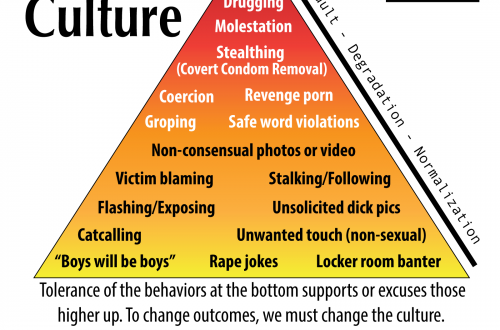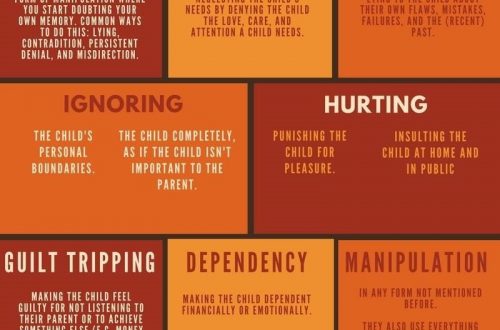
Red Flags To Look For In An Abusive Personality
Many women are interested in knowing how to spot a potential abuser, especially once they have been involved in an abusive relationship. Below you will find a list of behaviors seen in abusers; the last four signs listed are abusive behaviors that are often overlooked as the beginning of physical abuse. If a person displays several of the other behaviors, say three to more, there is a strong potential for physical violence. The more signs a person has, the more likely the person is an abuser. In some cases, an abuser may have only a few behaviors that the woman can recognize, but they are very exaggerated (for example, will try to explain the behavior as a sign of love and concern); a woman may be flattered at first. As time goes on, the behaviors become more severe and serve to dominate and control the woman.
- Controlling behavior. At first, the batterer will say this behavior is due to his concern for her safety, her need to use her time well, or her need to make good decisions. He will get angry if the woman is ‘late’ coming back from the store or an appointment; he will question her closely about where she went and with whom she talked. As the behavior progresses, he may not allow the woman to make personal decisions about the house, children, her clothing, or attending church. He may keep all the money or even make her ask for permission to leave the house or room.
- Jealousy. At the beginning of the relationship, the abuser will say his jealousy is a sign of love. Jealousy has nothing to do with love. It is a sign of possessiveness and lack of trust. The abuser may question his partner about who she talks to, accuse her of flirting, having an affair, or being jealous of the time she spends with family, friends, or children. As the jealousy progresses, he may call her frequently during the day or drop by unexpectedly. He may refuse to let her work for fear she’ll meet someone else, or even begin behaviors such as checking her car mileage or asking friends to watch her.
- Quick involvement. A large number of abused women dated or knew their abuser for less than six months before they were engaged, married, or living together. He comes in like a tornado, claiming, “You’re the only one who understands”, or “the only one I can talk to”, or “the only one I’ve loved this much”. He will pressure the woman to commit to the relationship in such a way that the woman may feel guilty or that she’s ‘letting him down’ if she wants to slow down the involvement or break off the relationship.
- Unrealistic expectations. Abusive people will expect their partner to meet all their needs. He expects a perfect wife, mother, lover, and friend. The abuser will say things such as “if you love, I’m all you need, and you’re all I need.” The abuser expects his partner to take care of everything for him emotionally and in the home.
- Isolation. The abuser tries to cut his partner off from all resources and support. If she has male friends, she’s a whore. If she has women friends, she’s a lesbian. If she’s close to family, she’s tied to apron strings. He accuses people who are her support of causing problems. He may want to live in the country, without a phone, or refuse to let her drive the car, or he may try to keep her from working or going to school.
- Blames others for problems. If he is chronically unemployed, someone is always doing him wrong or out to get him. He may make mistakes and then blame his partner for upsetting him and keeping him from concentrating on the task at hand. He may blame his partner for anything that goes wrong in his life.
- Blames others for feelings. The abuser may tell his partner “You make me mad,” ”you’re hurting me by not doing what I want you to do” or “I can’t help being angry.” He is the one who makes the decision about what he thinks or feels, but he will use these feelings to manipulate his partner.
- Hypersensitivity. An abuser is easily insulted, claiming his feelings are “hurt’, when in actuality he is angry or taking the slightest setback as a personal attack. He will “rant and rave” about the injustice of things that have happened, things that are just a part of living (for example, being asked to work late, getting a traffic ticket, or being told about annoying behavior).
- Cruelty to children or animals. Abusers may expect children to be capable of things beyond their abilities (punishes 18-month-old for wetting their diaper). He may tease children until they cry. He may not want children to eat at the table or may expect them to be kept in their rooms when he is home. He may punish animals brutally or be insensitive to their pain or suffering.
- Playful use of force in sex. An abuser may enjoy throwing the woman down or holding her down during sex. He may want to act out fantasies during sex where the woman is helpless. He is letting his partner know that the idea of rape is exciting. He may show little concern about whether the woman wants to have sex and uses sulking or anger to manipulate her into compliance. He may begin having sex with the woman while she is sleeping or demand sex when she is ill or tired.
- Verbal abuse. In addition to saying things that are intentionally meant to be cruel and hurtful, verbal abuse is also apparent in the abuser’s degrading of his partner, cursing her, and belittling her accomplishments. The abuser tells her she is stupid and unable to function without him. The abuser may also wake her up to verbally abuse her or not let her go to sleep.
- Rigid sex roles. The abuser expects his partner to serve him. He may even say the woman must stay at home and obey in all things-even acts that are criminal in nature. The abuser sees women as inferior to men, responsible for menial tasks, and unable to be a whole person without a relationship.
- Dr. Jekyll/Mr. Hyde. The abuser keeps his partner confused by sudden changes in his mood. She may believe he has some sort of mental problem because one minute he’s loving, and the next he’s exploding. Explosiveness and moodiness are typical of men who beat their partners.
- Previous abusive relationships. The abuser may say he has hit women in the past, but blame them for the abuse (“they made me do it”). His relatives or ex-partners may warn her that he is abusive. An abuser will abuse any woman he is with if the relationship lasts long enough for the violence to be introduced.
- Threats of violence. Threats of physical violence meant to control the partner: “I’ll kill you!’, “I’ll break your neck”, and “you’d better watch yourself, or else”. Most people do not threaten their partners; abusers will try to excuse their threats by saying, “everyone talks like that”.
- Breaking or striking objects. Breaking cherished possessions is used as punishment, but mostly to terrorize the woman into submission. The abuser may beat on the table with his fist, or throw things around or near his partner.
- Any force during an argument. This may involve the abuser preventing the woman from leaving a room, by restraining, pushing, or shoving. He may hold his partner against the wall, telling her “you’re going to listen to me!”
INTERACT
Safety and Support for Victims and Survivors of Domestic Violence and Sexual Assault
24-Hour Crisis Lines: Domestic Violence 828-7740 – Rape 828-3005
Continuum of Harmful Behaviors in Intimate Relationships
© Emerge, www.emergedv.com
Abusive Behavior Includes actions that engender fear and intimidation, or undermine the other person’s self-determination. Many controlling behaviors may also be abusive within the context of physical or psychological abuse.
Controlling Behavior Includes abusive behaviors but also actions that are undermining the other person’s self-determination or self-esteem. This includes unilateral complaints, controlling the agenda, and freedom from accountability to the other person (e.g., coming and going as one pleases). Behavior is non-abusive if it lacks the elements of fear and intimidation.
Insensitive and/or Alienating Behavior Includes all abusive and controlling behaviors listed below, but also actions that are self-centered, inconsiderate, selfish, and isolating or withdrawing. Behavior is non-abusive if it lacks the elements of fear, intimidation, and control.




